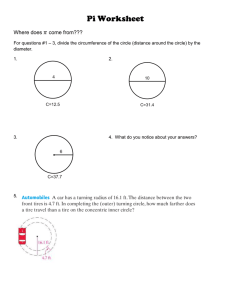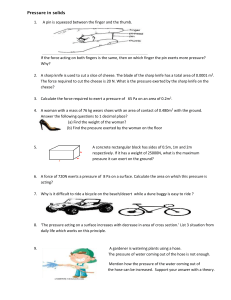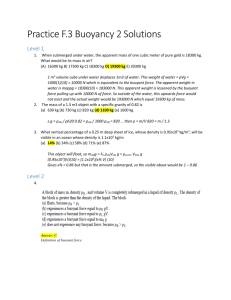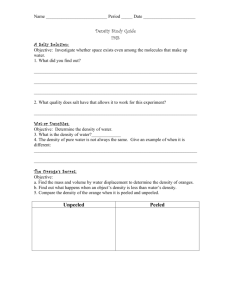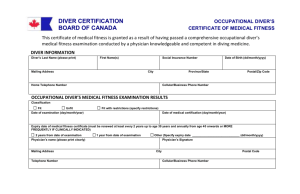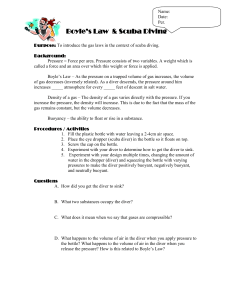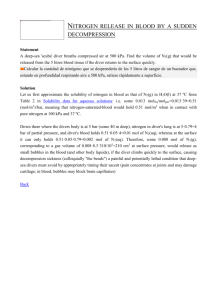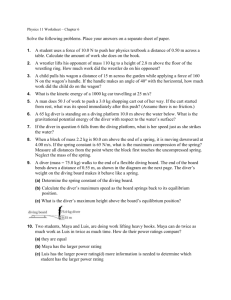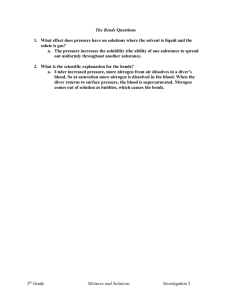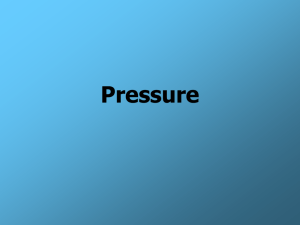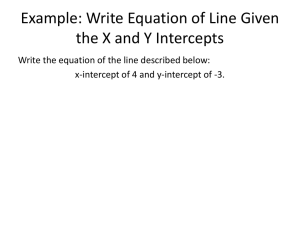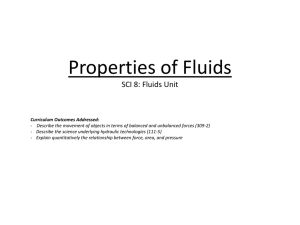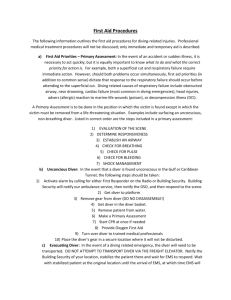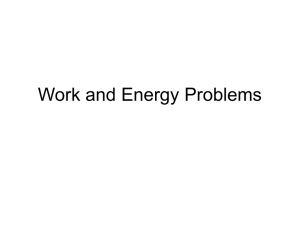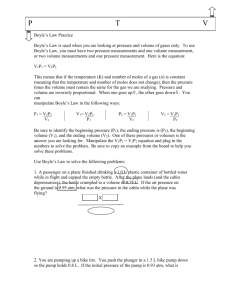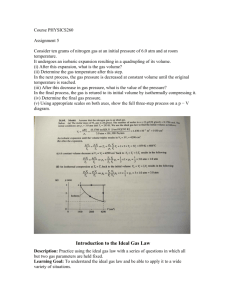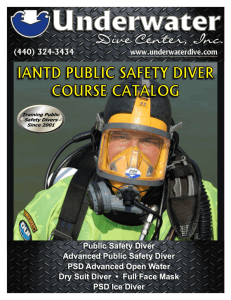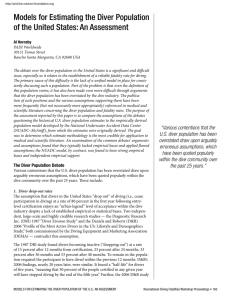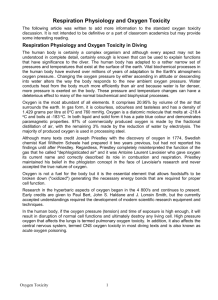Chapter 10 of Physics: Principles with Applications by Douglas
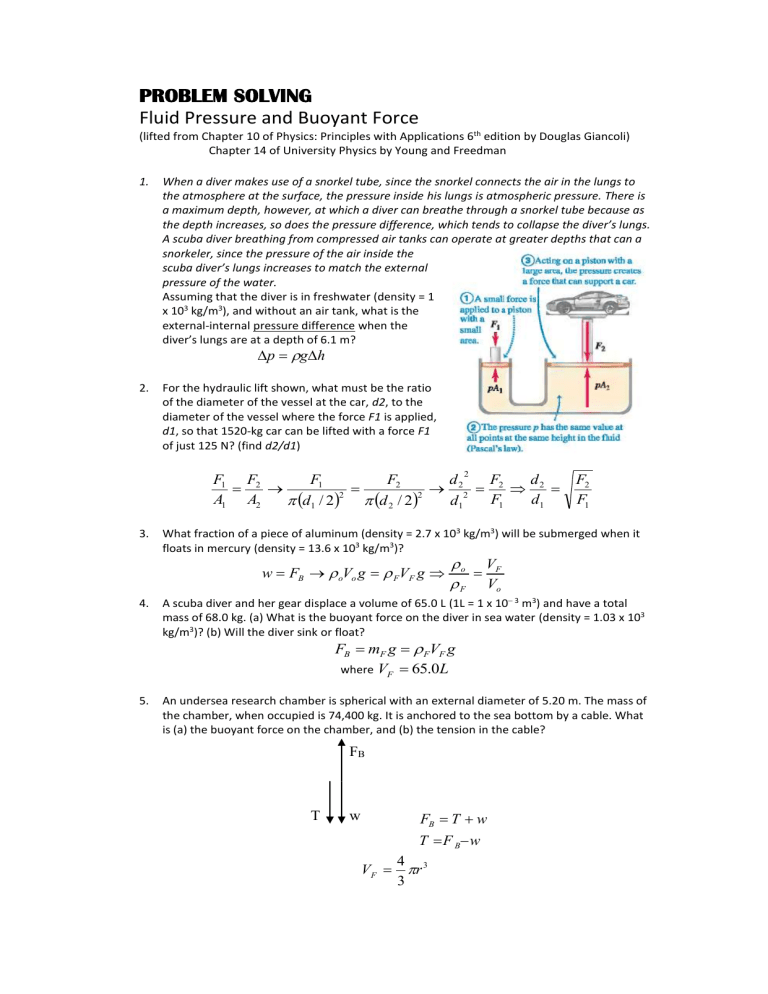
PROBLEM SOLVING
Fluid Pressure and Buoyant Force
(lifted from Chapter 10 of Physics: Principles with Applications 6 th edition by Douglas Giancoli)
Chapter 14 of University Physics by Young and Freedman
1.
When a diver makes use of a snorkel tube, since the snorkel connects the air in the lungs to the atmosphere at the surface, the pressure inside his lungs is atmospheric pressure. There is a maximum depth, however, at which a diver can breathe through a snorkel tube because as the depth increases, so does the pressure difference, which tends to collapse the diver’s lungs.
A scuba diver breathing from compressed air tanks can operate at greater depths that can a snorkeler, since the pressure of the air inside the scuba diver’s lungs increases to match the external pressure of the water.
Assuming that the diver is in freshwater (density = 1 x 10 3 kg/m 3 ), and without an air tank, what is the external-internal pressure difference when the diver’s lungs are at a depth of 6.1 m?
p
g
h
2.
For the hydraulic lift shown, what must be the ratio of the diameter of the vessel at the car, d2, to the diameter of the vessel where the force F1 is applied,
d1, so that 1520-kg car can be lifted with a force F1 of just 125 N? (find d2/d1)
F
1
A
1
F
2
A
2
d
1
F
1
/ 2
2
d
F
2
2
/ 2
2
d
2
2 d
1
2
F
2
F
1
d
2 d
1
F
2
F
1
3.
What fraction of a piece of aluminum (density = 2.7 x 10 3 kg/m 3 ) will be submerged when it floats in mercury (density = 13.6 x 10 3 kg/m 3 )? w
F
B
o
V o g
F
V
F g
F o
V
F
V o
4.
A scuba diver and her gear displace a volume of 65.0 L (1L = 1 x 10
3 m 3 ) and have a total mass of 68.0 kg. (a) What is the buoyant force on the diver in sea water (density = 1.03 x 10 3 kg/m 3 )? (b) Will the diver sink or float?
F
B
m
F g where V
F
F
65 .
V
F
0 L g
5.
An undersea research chamber is spherical with an external diameter of 5.20 m. The mass of the chamber, when occupied is 74,400 kg. It is anchored to the sea bottom by a cable. What is (a) the buoyant force on the chamber, and (b) the tension in the cable?
F
B
T w
V
F
F
B
T
F
T
B
w w
4
3
r
3
